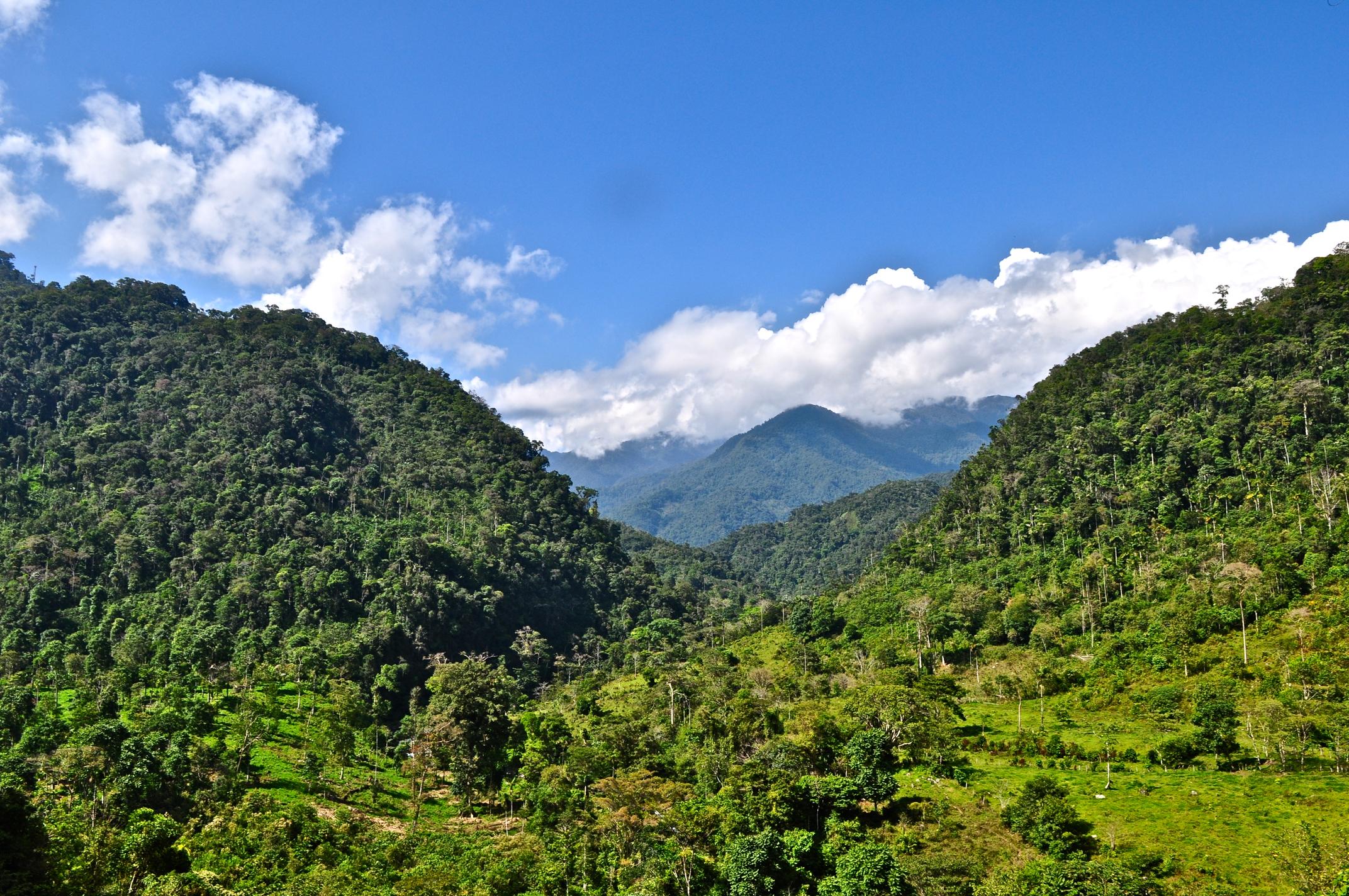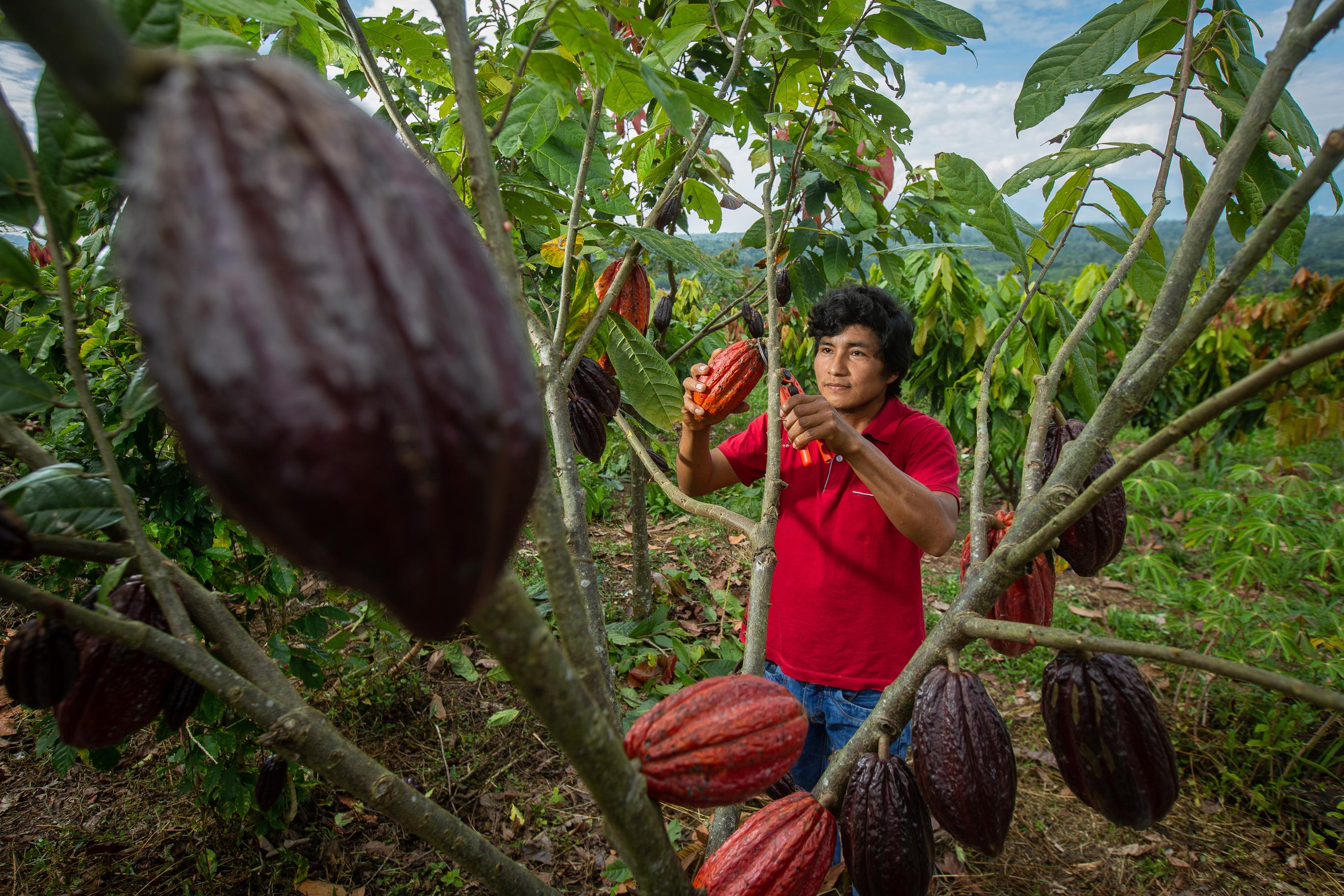
Helping communities protect nature — for the well-being of us all
Conservation International-Peru works to protect and restore Peru’s critical ecosystems by improving the livelihoods of local communities and Indigenous peoples who live closest to nature. Since 1991, we’ve worked to halt deforestation in the Peruvian Amazon, protect surf ecosystems and artisanal fishing practices in the country’s coastal communities, and conserve a variety of megafauna — including whales, sharks and manta rays — along migratory routes from Costa Rica to Chile.
Working with private and public partners, we help mobilize funding to promote the establishment of protected natural areas. To date, we’ve helped create a range of protected areas across Peru, including Bahuaja-Sonene National Park, Tambopata National Reserve and Ichigkat Muja – Cordillera del Condor National Park, a heavily forested region with many threatened species.
1991
YEAR FOUNDED
4.3M
PEOPLE
dependent on nature in Peru1
3.1B
METRIC TONS
of irrecoverable carbon in Peru2
641
VERTEBRATE SPECIES
that are endemic to Peru3
Areas we work

Improving livelihoods, protecting forests in Alto Mayo
For more than a decade, Conservation International-Peru has worked to protect the Alto Mayo basin, a large, forested region in northern Peru that provides clean water for surrounding communities and habitats for biodiversity. But the Alto Mayo region has seen some of Peru’s highest deforestation rates, threatening both the environment and the livelihoods of local communities, including 16 Awajún Indigenous groups that rely on the forest for survival.
Recently, 27 new species were discovered in the Alto Mayo region, underscoring its rich biodiversity and proving that people and nature can thrive together. Conservation International-Peru is collaborating closely with the Awajún people to conserve forest ecosystems in and around Alto Mayo, restore connectivity between their territories and conservation areas, and promote sustainable development.
Through initiatives like sustainable cacao and medicinal plant cultivation, we are helping the Awajún access new markets, creating economic opportunities while ensuring the long-term protection of Alto Mayo’s biodiversity.
References
- Fedele, G., Donatti, C. I., Bornacelly, I., & Hole, D. G. (2021). Nature-dependent people: Mapping human direct use of nature for basic needs across the tropics. ScienceDirect, 71. https://doi.org/10.1016/j.gloenvcha.2021.102368
- Conservation International (2021, November). Irrecoverable Carbon. Retrieved January 2025, from https://www.conservation.org/irrecoverable-carbon
- The IUCN Red List of Threatened Species. (2024). Table 8a: Total, threatened, and EX & EW endemic species in each country [Fact sheet]. https://www.iucnredlist.org/resources/summary-statistics#Summary%20Tables